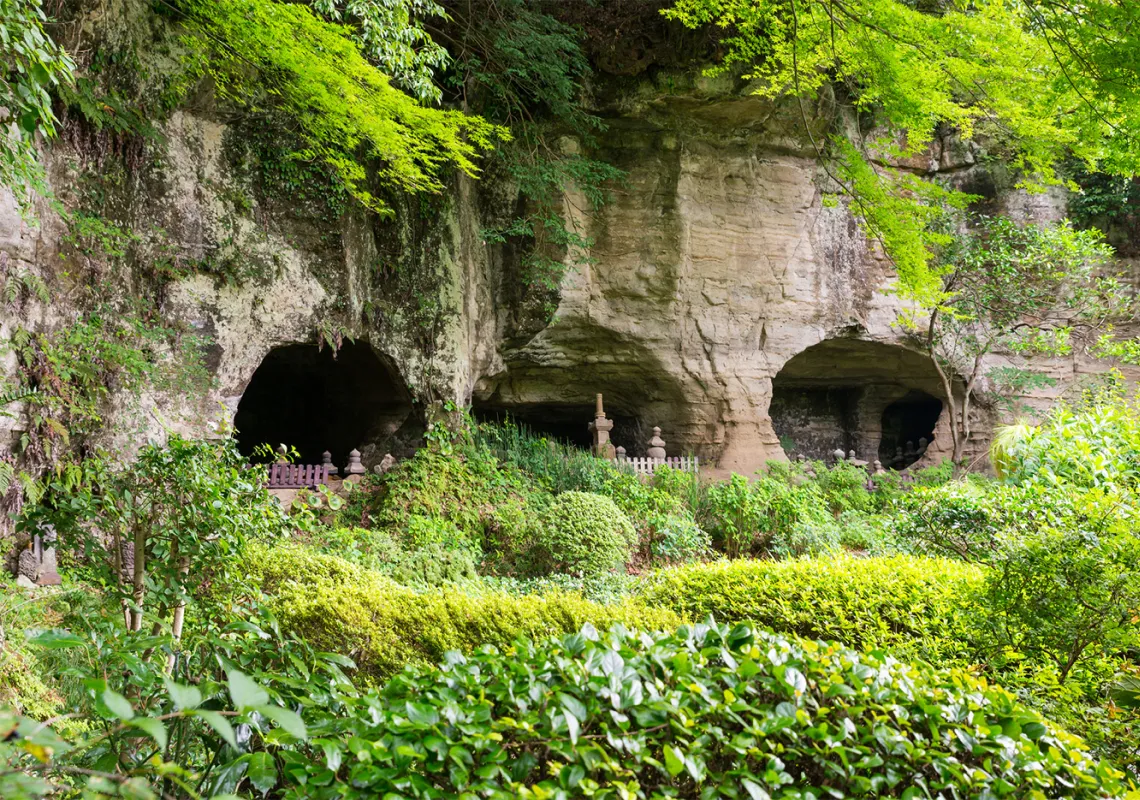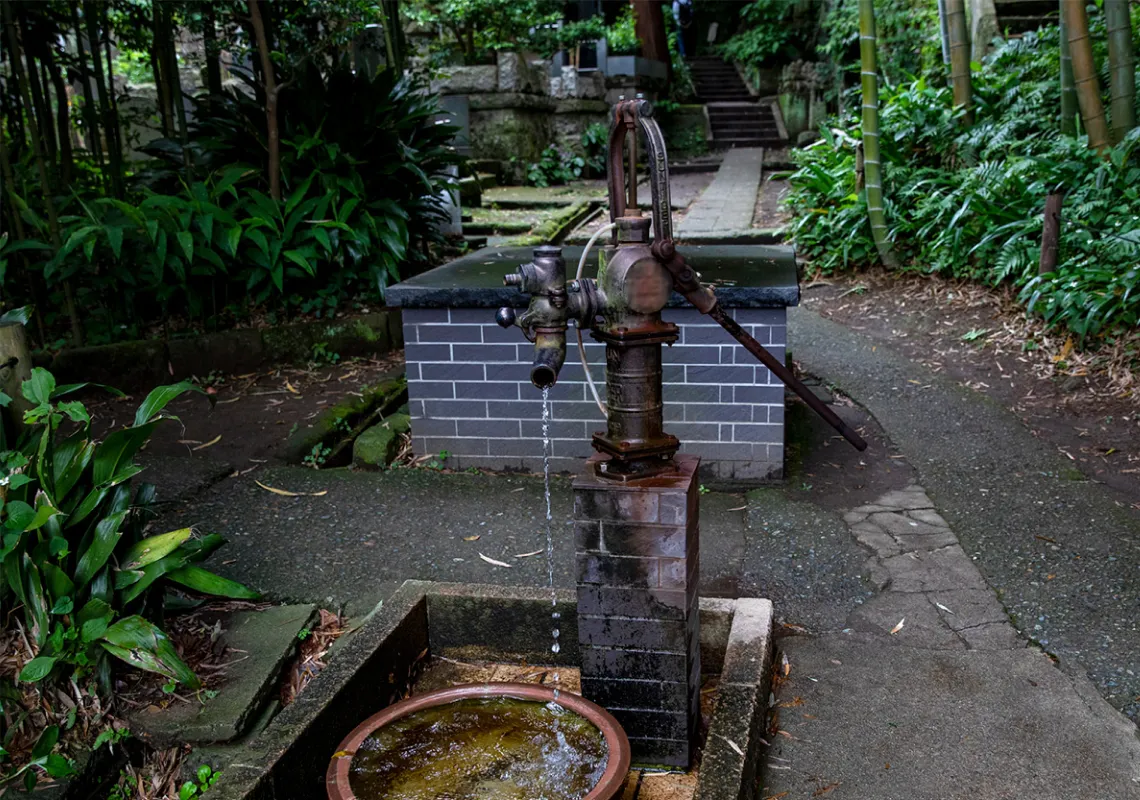About the geographical features of Kamakura
-
terrain surrounded by mountains

Kamakura has a basin-like topography surrounded by mountains on all sides, and has served as a natural fortress since ancient times. This topography serves as a natural defensive wall that makes it difficult for foreign invaders to invade, and during the Kamakura Shogunate period, defense measures were taken to utilize this.
-
Kiritoshi(Kamakura Nanakuchi)

Kamakura has seven main roads called ``Kamakura Nanakuchi'', which are cut through the mountain. These roads served not only as access points to Kamakura, but also played an important defensive role. Through these cuts, communication with the outside of Kamakura was made possible, and at the same time, by protecting these narrow roads, it was possible to prevent the invasion of foreign enemies.
-
Yagura

A ``Yagura'' in Kamakura is a cave tomb made from soft rock in a limited area of flat land. In Kamakura, there was little flat land and it was difficult to secure suitable graveyards, so towers made by digging into rocks became common. The rock, which was made of sand mixed with volcanic ash unique to this area, was easy to work with and suitable for digging up towers. The Yagura is a characteristic heritage site that symbolizes Kamakura's history and culture, and is one of the must-see points when sightseeing in Kamakura.
-
wells and water sources

Because Kamakura is surrounded by mountains, securing a water source is important, and many wells have been dug and used as water sources for daily life and defense. Among them, ``Kamakura Jissei'' is a group of ten wells that provide delicious water with good quality and legends.It was built during the Edo period (17th century - It was introduced as a famous historical site in the 19th century when sightseeing in Kamakura became popular, and is an important infrastructure that reflects the geographical characteristics of Kamakura.
-
valley

The topography of Kamakura is characterized by many valleys, and these valleys are pronounced ``Yatsu'' and are also used as place names. These not only shape the natural landscape but also influence local water management. The river that flows through the valley was once an indispensable source of water for people's daily lives and agriculture, demonstrating that Kamakura's nature and people's lives were closely intertwined.
